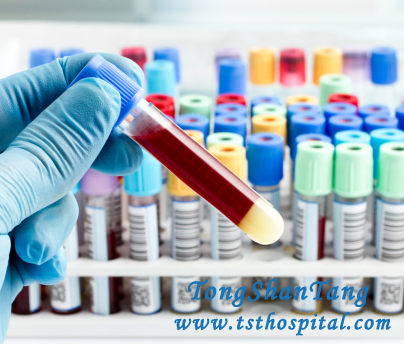 How to test for PKD? If you are suspicious of polycystic kidney disease (PKD), you can do the following tests to have a clear diagnosis of PKD.
How to test for PKD? If you are suspicious of polycystic kidney disease (PKD), you can do the following tests to have a clear diagnosis of PKD.
1. Routine urine test
In the early stage, there is no abnormality; in the middle and late stage, there is microscopic hematuria; some patients present proteinuria. There are white blood cells and pus cells if patients have kidney stones and infection.
2. Urine osmotic pressure test
In the early stage of lesion, when only a few cysts are present, the expression of impaired renal concentration function could be observed, suggesting that the change is not completely related to the destruction of renal structure and might be related to the adverse reaction of the kidney against diuretic hormone. The decrease in renal concentration precedes the decrease in glomerular filtration rate.
3. Serum creatinine
With the loss of renal compensatory ability, it presents a progressive increase. Creatinine clearance rate is a sensitive index.
4. KUB
It shows that there is an enlarged renal shadow with an irregular appearance.
5. IVP
The pelvis and calyces show signs of compression and deformation. The pelvis and calyces are oddly spidery. The calyces are flat and wide. The calyx neck elongates and narrows. The calyx neck is elongated and thin, often curved.
6. Ultrasound
This shows numerous dark areas in both kidneys.
7. CT
It shows that both kidneys are enlarged and lobulated, with numerous liquid-filled parenchyma cysts.
After diagnosing PKD, do not worry too much. There is treatment to help you control PKD well.
Micro-Chinese Medicine Osmotherapy for PKD
This treatment shows remarkable effect in shrinking kidney cysts and stopping them from enlarging. It can penetrate the micronized herbs into polycystic kidneys directly to take effect. For example, it can suppress the abnormal activity of renal tubular epithelial cells and lining cells to stop their growth. It can increase the permeability of cyst wall and pressure difference inside and outside so that fluid can be taken away from inside. Moreover, it has the function of anti-inflammation, anti-coagulation, blood vessel dilation and extracellular matrix degradation, which is helpful for the recovery of kidney condition.
After about half month’s treatment, associated symptoms such as back pain, hematuria, high blood pressure, proteinuria and so on will get relieved greatly.
After about one month’s treatment, your disease will be under control. And kidney cysts will shrink.
How to test for PKD? Now you have a clear mind. If you are suspicious of the disease, you should go for tests as early as possible. For more information on PKD, please leave a message below or contact online doctor.
- Email:tsthospital@hotmail.com
- WhatsApp/WeChat/Phone Number:+86 15512139310
- Kidney Treatment Group:
- https://chat.whatsapp.com/2ZCOvebPJdr9QGkyfiqxDz
- Tag: PKD PKD Diagnosis
- previous:none
- next:none

